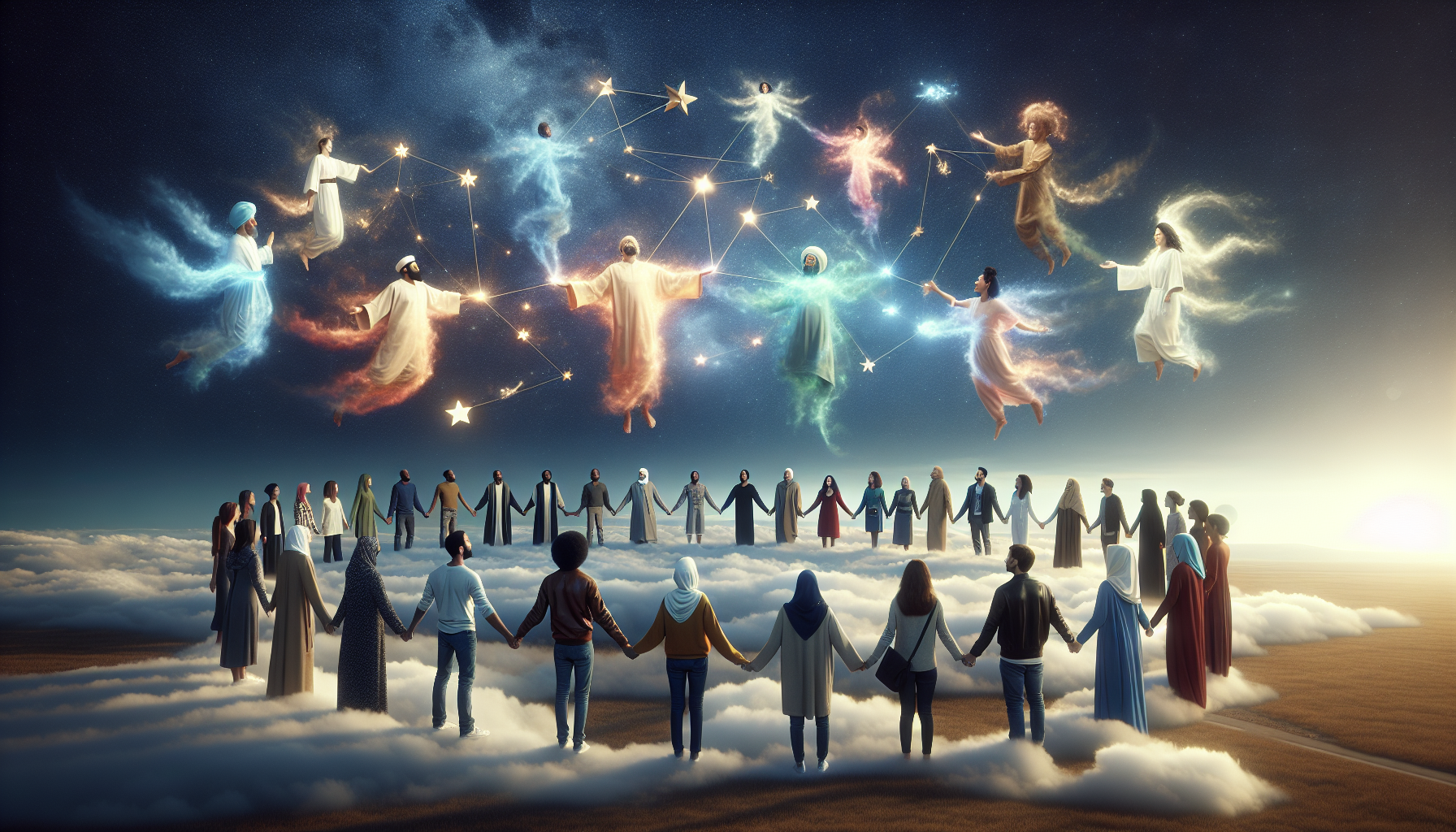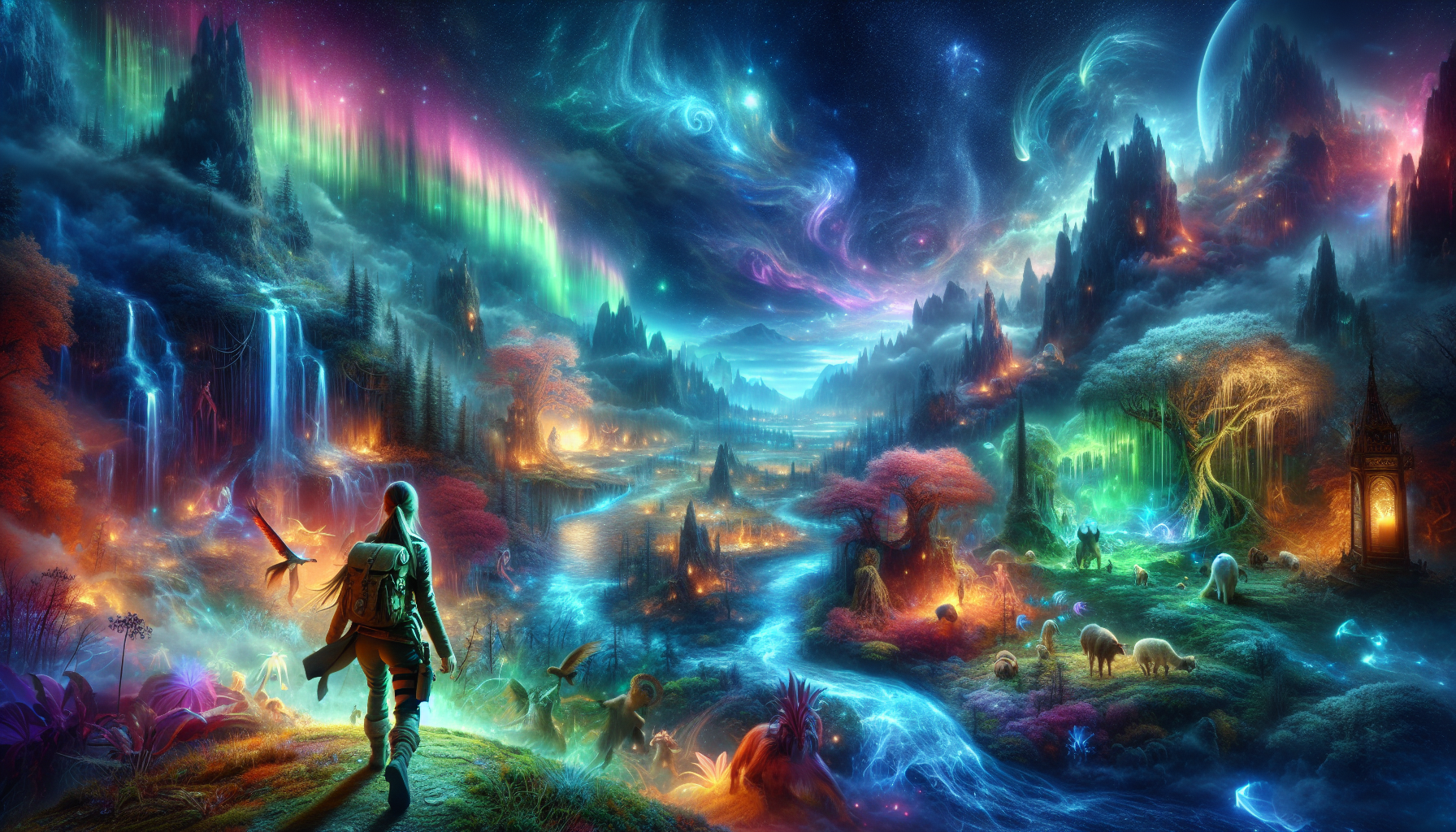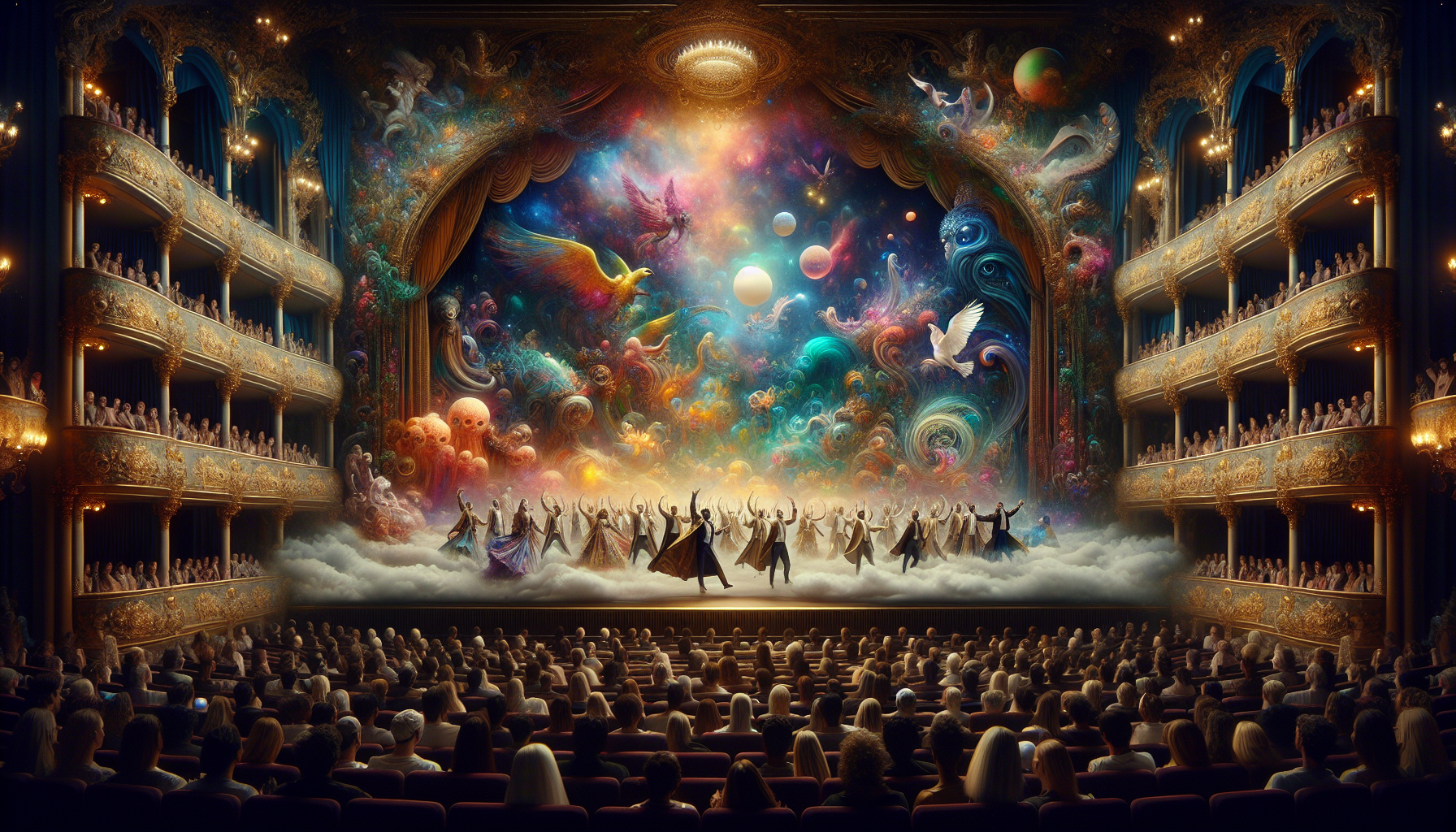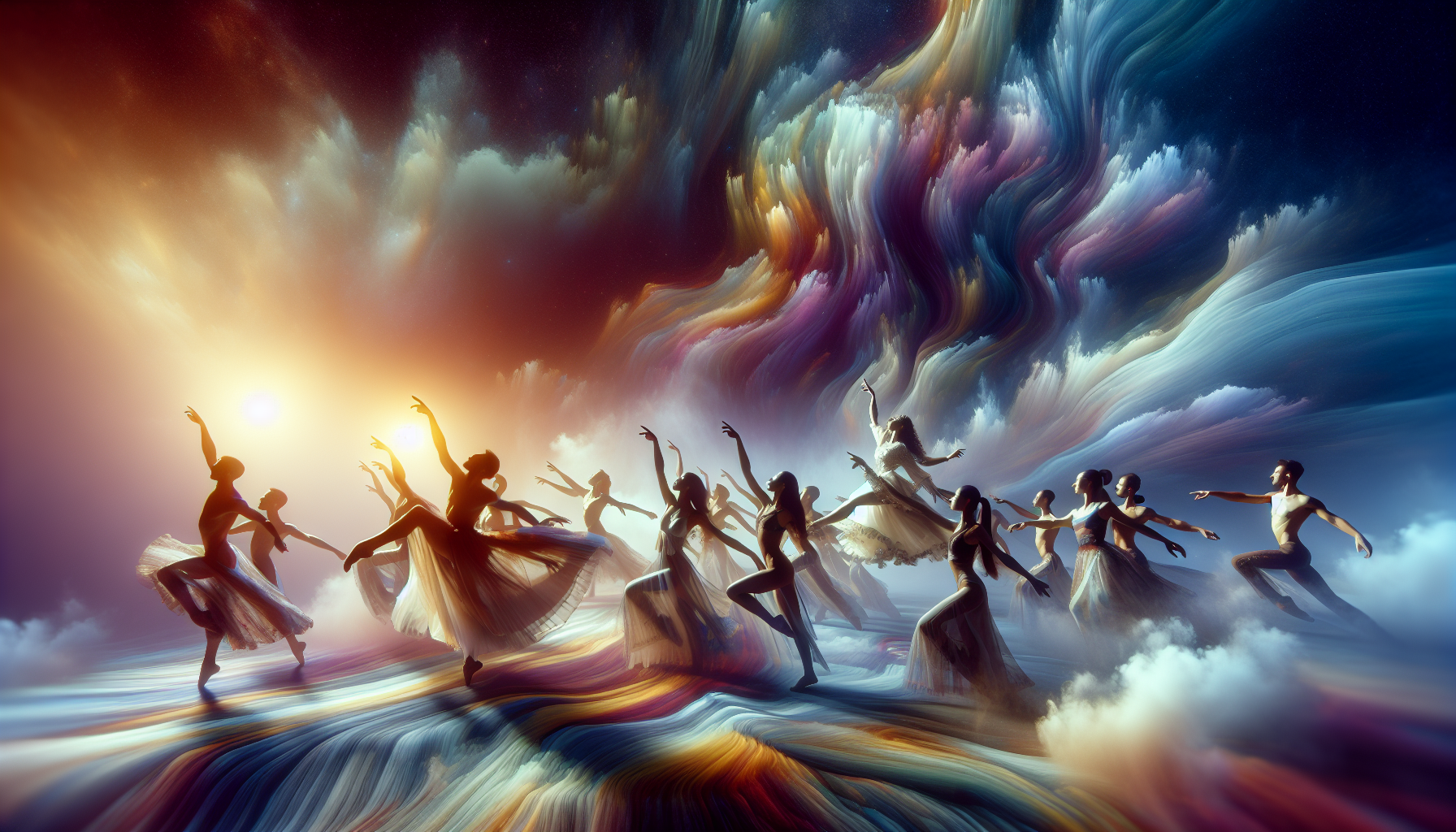In an increasingly interconnected world, where the click of a button can bridge oceans and transcend time zones, the concept of shared dreams has emerged as a powerful force for unity. In this vast digital landscape, where diversity is celebrated and myriad cultures converge, dreams without borders are weaving an intricate tapestry that binds people from all walks of life. These dreams are more than mere figments of our imagination; they are blueprints for a future where global collaboration and mutual understanding are not only possible but inevitable. 🌍
At the heart of this phenomenon lies a simple yet profound truth: despite our varied backgrounds, beliefs, and traditions, we all share the fundamental desire for a better tomorrow. This shared vision is a testament to the resilience of the human spirit and its unyielding quest for progress and harmony. As we navigate through the complexities of our modern world, these dreams serve as a compass, guiding us toward common goals and aspirations that transcend geographical and cultural barriers. Whether it’s the dream of eradicating poverty, promoting sustainable living, or achieving world peace, the potential of collective dreams to ignite change is boundless.
The Power of Dreams: A Universal Language
Dreams have long fascinated humanity, transcending cultural, linguistic, and geographical barriers. They are a universal phenomenon, experienced by individuals from all walks of life and in every corner of the globe. As such, dreams represent a unique, shared human experience, a common thread that unites people despite their apparent differences. In a world that often seems divided by borders, whether physical or ideological, dreams offer a glimpse into a realm where these barriers dissolve. This shared experience can foster a sense of unity and understanding, encouraging people to connect on a deeper level.
Dreams have been a subject of intrigue and speculation for centuries, with various cultures offering their interpretations and understandings. In ancient civilizations, such as Egypt and Greece, dreams were considered divine messages, with specific individuals designated as dream interpreters. This historical reverence for dreams indicates their perceived importance across different societies. Today, modern psychology and neuroscience continue to explore the significance of dreams, seeking to understand their purpose and meaning. Despite advances in science, dreams retain a certain mystery, captivating our imagination and curiosity.
The beauty of dreams lies in their ability to break down barriers. They speak a universal language, one that does not rely on words or symbols specific to a single culture or language. Instead, dreams communicate through images, emotions, and narratives that are relatable to anyone, anywhere. This universality allows individuals from diverse backgrounds to find common ground, recognizing shared themes and experiences in their dreams. Whether it’s a dream of flying, being chased, or revisiting a childhood home, these motifs resonate with people worldwide, highlighting our shared humanity.
Shared Visions: How Dreams Unite Us
One of the most remarkable aspects of dreams is their ability to bring people together, transcending cultural and linguistic barriers. In this interconnected world, shared visions can foster empathy and understanding among diverse groups, promoting a sense of global unity. Through dreams, individuals can connect with others who have experienced similar emotions or scenarios, fostering a sense of camaraderie and mutual understanding. This connection can be particularly powerful in times of global crises or challenges, where shared dreams can inspire collective action and solutions.
In many cultures, dreams are not only personal experiences but also communal ones. Indigenous communities, for example, often view dreams as a source of wisdom and guidance for the community as a whole. Dream sharing circles and storytelling traditions allow individuals to share their dreams with others, providing insights and interpretations that benefit everyone. This collective approach to dreaming emphasizes the interconnectedness of individuals within a community, reinforcing the idea that dreams can serve as a unifying force.
Dreams can also play a role in bridging gaps between different cultures. As individuals from diverse backgrounds share their dreams, they reveal common themes and concerns that transcend cultural differences. This shared understanding can pave the way for meaningful dialogue and collaboration, fostering cross-cultural relationships and promoting peace. In this way, dreams serve as a powerful tool for fostering empathy and breaking down barriers, allowing people to see beyond superficial differences and connect on a deeper, more human level.
Dreams in a Digital World: A New Era of Connectivity
In today’s digital age, technology has revolutionized the way we share and interpret dreams. Online platforms and social media have made it easier than ever for individuals to connect with others who share similar dream experiences. Websites and forums dedicated to dream interpretation allow users to share their dreams and receive feedback and insights from a global community. This digital connectivity has expanded the reach of dreams, allowing them to serve as a bridge between people from different cultures and backgrounds.
Social media platforms, such as Instagram and TikTok, have also played a role in popularizing dreams and making them more accessible to a wider audience. Hashtags like #DreamDiary and #DreamSharing have created online communities where individuals can share their dreams and connect with others who have had similar experiences. These platforms provide a space for creativity and expression, allowing people to explore the meaning of their dreams and share their interpretations with a global audience.
The digital world has also facilitated the creation of virtual dream-sharing communities, where individuals can come together to discuss and interpret their dreams. These online spaces provide a sense of belonging and support, allowing individuals to connect with others who understand and appreciate the significance of dreams. This sense of community can be particularly valuable for those who feel isolated or disconnected in their waking lives, offering a sense of connection and understanding that transcends geographical and cultural boundaries.
The Science of Dreams: Understanding the Unconscious Mind
The scientific study of dreams has shed light on the complex and fascinating world of the unconscious mind. Researchers in psychology and neuroscience have made significant strides in understanding the mechanisms and functions of dreaming, providing insights into the ways in which dreams can unite people worldwide. By exploring the science of dreams, we can gain a deeper understanding of their potential to foster global unity and connection.
One of the most well-known theories of dreaming is Sigmund Freud’s psychoanalytic theory, which posits that dreams are a window into the unconscious mind. According to Freud, dreams are a manifestation of repressed desires and emotions, offering insights into an individual’s innermost thoughts and feelings. This understanding of dreams highlights their potential to reveal shared human experiences and emotions, fostering empathy and connection among individuals from diverse backgrounds.
In recent years, advancements in neuroscience have provided new insights into the nature of dreams and their potential to unite people. Studies have shown that dreaming is a universal phenomenon, occurring in all humans and even in some animals. This universality suggests that dreams are a fundamental aspect of the human experience, offering a shared language that transcends cultural and linguistic barriers. By understanding the science of dreams, we can better appreciate their potential to foster global unity and connection.
| Aspect | Explanation |
|---|---|
| Freudian Theory | Dreams as a manifestation of repressed desires and emotions. |
| Neuroscience | Dreams as a universal phenomenon, offering a shared human experience. |
| Cultural Significance | Dreams as a source of wisdom and guidance in various cultures. |
For a deeper dive into the science behind dreams, check out this insightful video from TED-Ed on “How Dreams Work” here. 🎥
Dreams as a Catalyst for Social Change
Dreams have the power to inspire individuals and communities to envision a better future, serving as a catalyst for social change. Throughout history, visionary leaders and activists have drawn inspiration from their dreams, using them as a source of motivation and guidance in their efforts to create a more just and equitable world. By harnessing the power of dreams, individuals can tap into their creativity and imagination, envisioning new possibilities and solutions to pressing global issues.
One of the most famous examples of dreams inspiring social change is Martin Luther King Jr.’s iconic “I Have a Dream” speech. King’s vision of a racially integrated and harmonious society served as a rallying cry for the civil rights movement, inspiring millions to join the fight for equality and justice. This powerful example demonstrates the potential of dreams to inspire collective action and create meaningful change, highlighting their role as a unifying force in the pursuit of social progress.
Dreams can also play a role in promoting environmental sustainability and conservation efforts. As individuals become more aware of the impact of their actions on the planet, dreams can serve as a source of inspiration and motivation to make positive changes. By envisioning a more sustainable future, individuals and communities can work together to implement solutions and strategies that promote environmental stewardship and conservation. This shared vision can foster a sense of global responsibility and solidarity, encouraging people to come together in pursuit of a common goal.
The Future of Dreams: Building a World Without Borders
As we look to the future, the potential for dreams to unite people and transcend borders is more important than ever. In an increasingly interconnected world, dreams can serve as a powerful tool for fostering empathy, understanding, and collaboration among diverse groups. By embracing the universal language of dreams, individuals can work together to build a world without borders, where shared visions and goals unite people in the pursuit of a brighter future.
Emerging technologies, such as virtual reality and artificial intelligence, offer exciting possibilities for the future of dream sharing and interpretation. These technologies have the potential to create immersive and interactive dream experiences, allowing individuals to explore and share their dreams in new and innovative ways. By leveraging these tools, we can expand the reach of dreams and promote a sense of global unity and connection.
Ultimately, the future of dreams lies in their ability to inspire and unite people across cultural and geographical boundaries. By embracing the power of dreams, we can work together to create a more inclusive and harmonious world, where shared visions and aspirations drive us towards a brighter future. As we continue to explore the potential of dreams, we can unlock new possibilities for connection and collaboration, building a world without borders.
- Dreams as a universal language.
- Shared visions fostering global unity.
- The role of technology in dream sharing.
- Dreams inspiring social change.
- The future of dreams in a connected world.

Conclusion
In conclusion, the theme of “Dreams Without Borders: How Shared Visions Unite People Worldwide” captures the essence of human connection and the transformative power of collective aspirations. Throughout this article, we explored the ways in which dreams transcend geographical, cultural, and linguistic barriers, highlighting that the human spirit’s desire for progress and unity knows no bounds.
We began by examining the historical context of shared dreams and how pivotal moments in history have been driven by collective visions. From the civil rights movements to global initiatives like the United Nations, we see how shared goals can bring about significant change. These examples underscore the potential of dreams to foster collaboration and inspire action, creating a ripple effect that can lead to societal transformation.
Moreover, we delved into the role of technology and social media in connecting dreamers worldwide. In today’s digital age, platforms like Facebook, Twitter, and Instagram serve as modern-day town squares where ideas are exchanged, movements are born, and dreams are shared on a global scale. The digital landscape has made it easier than ever for individuals to find communities that share their passions and ambitions, breaking down physical and cultural barriers in the process.
An essential part of our discussion focused on the psychological and emotional benefits of shared dreams. When individuals unite around a common vision, they experience a profound sense of belonging and purpose. This collective pursuit not only fuels individual motivation but also strengthens community bonds, fostering an environment where diverse perspectives are valued and celebrated.
Additionally, we considered the economic implications of shared dreams. Collaborative efforts often lead to innovative solutions and entrepreneurial ventures that can drive economic growth and sustainability. By investing in shared visions, communities can create opportunities for development that benefit all stakeholders, promoting equitable progress on a global scale.
The stories of individuals and groups who have successfully turned their dreams into reality serve as powerful reminders of what is possible when we come together. Whether it’s grassroots organizations tackling local challenges or international coalitions addressing global issues, the success of these initiatives lies in their ability to harness the power of shared dreams.
As we reflect on these insights, it becomes clear that nurturing and supporting shared visions is crucial for the advancement of our societies. Encouraging open dialogue, fostering inclusivity, and providing resources for collaboration are essential steps toward achieving dreams that can change the world. We must recognize the potential within our collective aspirations and embrace the diversity of thought that enriches our shared experiences.
In closing, I invite you to think about your own dreams and how they intersect with those of others around the world. Consider the ways in which you can contribute to a shared vision, whether it’s through activism, education, entrepreneurship, or simply spreading awareness. Your voice matters, and your dreams have the power to inspire and unite.
Let us continue to dream without borders, knowing that our collective visions hold the key to a brighter, more inclusive future. Share this article with friends and family to spark conversations about the dreams that unite us all. Comment below with your thoughts and ideas on how we can build a world where dreams know no boundaries. 🌍💫
For further exploration of this topic, consider visiting reputable sources such as the United Nations’ initiatives on global cooperation here and research on the impact of digital communication on social movements here.
Gabriel is a visual storyteller and dream archivist whose work explores the fragile boundary between memory and imagination. Through layered visuals and symbolic design, Gabriel captures the fleeting essence of dreams — those strange, beautiful, and sometimes haunting fragments that drift through sleep and linger in waking thought.
His creative journey is rooted in a deep fascination with the subconscious and the imagery it conjures. From half-remembered landscapes to recurring symbols and surreal encounters, each piece Gabriel brings to life becomes a portal into the inner archive — where time distorts, meanings shift, and personal mythology takes form.
With a background in handcrafted artistry and visual composition, Gabriel merges intuition with intention. His work doesn’t merely depict dreams; it preserves them, translating ephemeral moments into tangible expressions that evoke emotion, curiosity, and quiet revelation. Each visual is both a record and an invitation to explore the rich terrain of inner life.
Through illustrated dream journals, symbolic studies, and visual essays, Gabriel invites others to connect with the poetic architecture of their subconscious landscapes. His art becomes a mirror — not only of what we see at night, but of what we carry deep within.
His work is a tribute to:
-
The fragile beauty of forgotten dreams
-
The language of symbols in the subconscious mind
-
The inner worlds we visit but rarely name
Whether you’re a lucid dreamer, a seeker of hidden meanings, or someone fascinated by the mystery of sleep-born stories, Gabriel welcomes you to step into a space where dreams are not lost — they are archived, one vision, one sketch, one silent narrative at a time.





